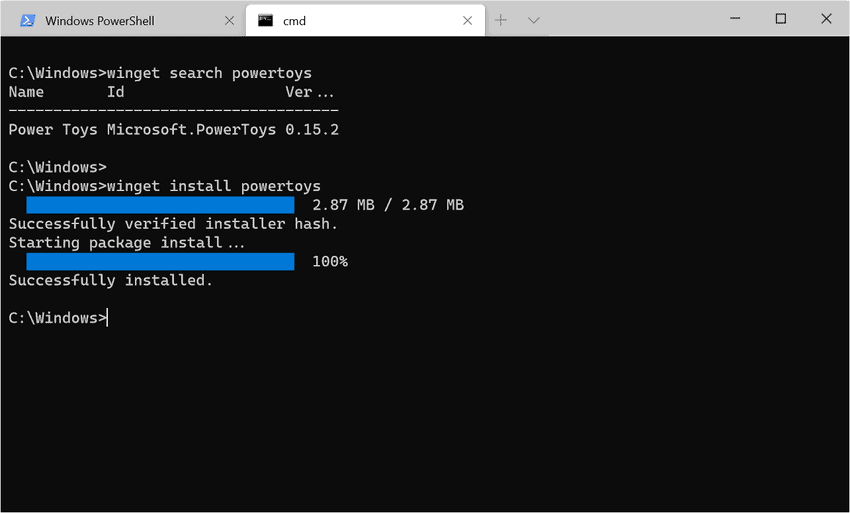Microsoft also released a preview of Windows Package Manager today during the Build 2020 virtual conference. Windows administrators may use it to install third-party programs, such as 7-Zip, KeePass, Arduino IDE, or Discord.

The package manager is similar to the package managers on Linux systems and essentially allows users to search for, download, install, and uninstall programs and packages for the Windows operating system. Its main purpose is to automate the installation, updating and configuration of software in Windows. Linux users are familiar with the package manager system.
The Windows Package Manager works similarly to package managers on Linux. Microsoft decided to released as open source. Interested users can check out GitHub for download of the preview version of Package Manager.
The package manager requires at least version 1709 of Windows 10 and can be installed either from the Microsoft Store (requires Windows 10 Insider version and sending invitation email for now) or manually from GitHub.
Once installed, open a Windows Terminal, PowerShell or Command Prompt window to start using it. The command is winget and you may first want to run it without any parameters, to first display the available commands and help.
The main commands currently available are:
- winget install // to install a program.
- winget show // displays information about the specified application.
- winget source // to change sources.
- winget search // to list all programs or specific programs.
- winget hash // for the hash installer files.
- winget validate // to validate manifest files.
- winget –help // help
- winget –info // data and troubleshooting help

The winget search command displays the list of programs supported by Windows Package Manager. There is currently a good selection of popular programs as well as developer tools. Programs such as vim, Whatsapp, GIMP, VLC, Steam or Sublime Text can be installed using Package Manager.
Note that the mode uninstaller is not currently supported. Microsoft plans to integrate the uninstall feature into the program soon.
The order winget install “program name” downloads the selected package and runs its installer. Programs appear to be downloaded from third-party sites (the developer's site) and not from a repository maintained by Microsoft.
The location of the file is displayed by the winget. The package manager currently supports exe, msi and msix installers.
Winget may operate without administrator privileges. Installing some programs may require administrator privileges, however prompts will be displayed if required.
The order winget show “package name” displays program information. This may include links to the homepage and license, the download URL, the SHA256 hash, and the installer type.
For software companies and developers who may be wondering if they can submit their programs to Windows Package Manager for listing, Microsoft has process information on the Docs website. Basically, what developers need to do is create a package manifest that provides information about the application before submitting the relevant statement to GitHub.
The script is supported. Administrators can create bundles actions batch or PowerShell to install multiple applications at once, e.g.
In conclusion
Windows Package Manager could become an essential tool in the arsenal of Windows system administrators as well as home users. It depends on several factors, such as if and how it is to be integrated into Windows, package availability and functionality.
As a technical installation of programs it has been working for years now for Linux users and is particularly easy to use, especially for people who do not have good computer knowledge.





